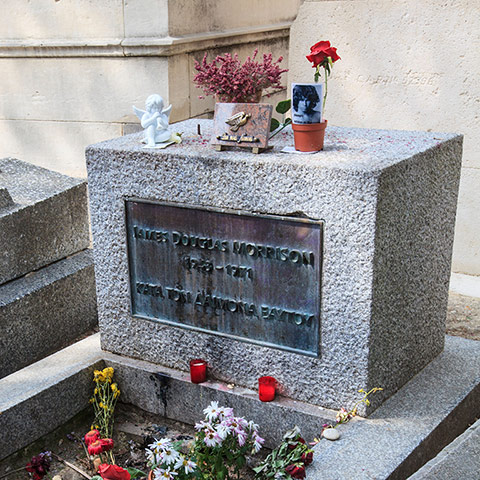
Père Lachaise Cemetery, Paris
Suggested by spanishmarc
‘WotnoJimMorrison!!’ exclaimed spanishmarc in the original thread. HardcorePrawn came up with one possible reason for the omission: ‘To be fair, Père-Lachaise could have warranted its own gallery. I suppose that it had to be narrowed down to one submission for this gallery [which was Oscar Wilde], and Jim Morrison's grave has (pardon the expression) been done to death.’ ‘You don't need a map to find Jim Morrison's grave,’ added ChoccaMocha. Just follow your nose - it is always wreathed in marijuana smoke!’ Photograph: Martin Bache/Alamy
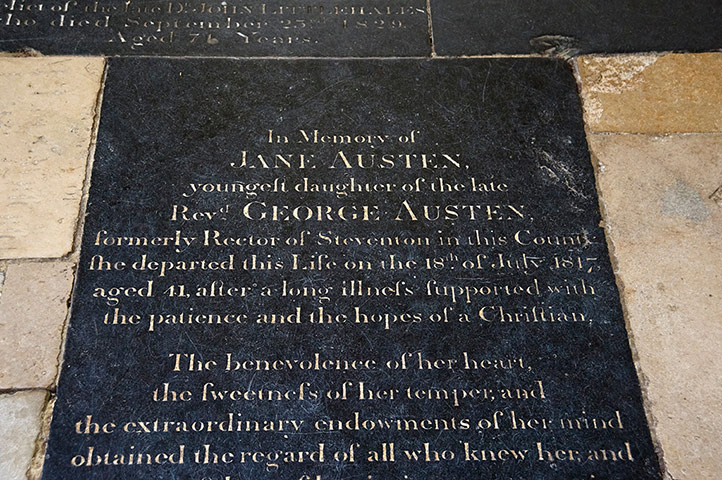
Winchester Cathedral, Hampshire
Suggested by slinkylinky and riverwillow
There’s a notable omission from the gravestone of one of our most celebrated authors. While it talks about ‘The benevolence of her heart / the sweetness of her temperment / the extraordinary endowments of her mind’, nowhere does it mention that she was a writer, as slinkylinky points out. Was this a sign of the times, with writing being seen as an unseemly profession for a woman? Maybe not, says Sussexperson – in her lifetime her books were simply credited as ‘By a Lady’ … so perhaps her family didn’t want to blow her cover. Photograph: Ian Dagnall /Alamy
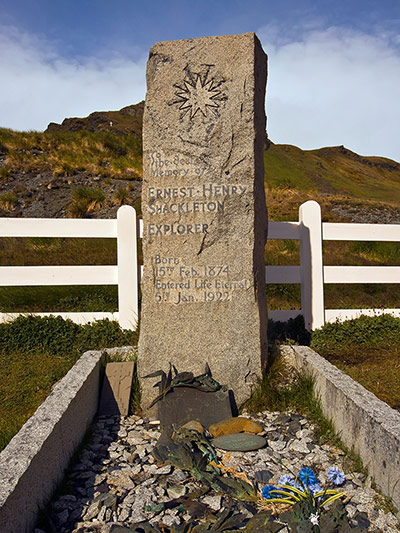
Grytviken Whaling Station, South Georgia Island
Suggested by EricaNernie
Antarctic explorer Sir Ernest Shackleton set off on his final expedition in search of the ‘lost’ Antarctic islands in 1921. However, he fell ill on the journey and, upon the boat’s arrival in Georgia in January 1922, he suffered a fatal heart attack. Rather than returning the body to England he was buried, at his wife’s request, in the Grytviken cemetery, South Georgia. Photograph: RGB Ventures /Alamy
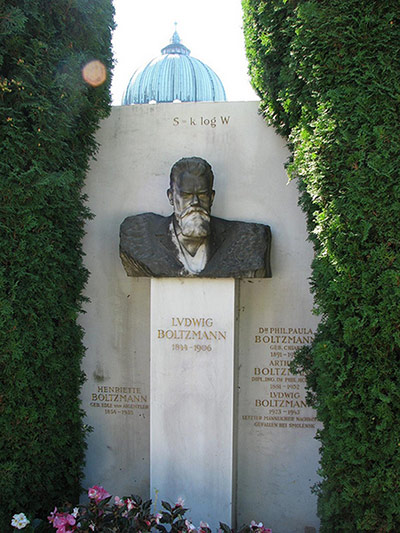
Trieste, Italy, later moved to Vienna
Suggested by Rod White and godis 7
RodWhite comments: ‘Ludwig Boltzmann developed the theory of statistical mechanics during the latter part of the 19th century. His work was controversial at the time but later vindicated after his death (suicide). His family buried him in a pauper's grave but he was later moved to the same graveyard in Vienna as Beethoven. The move was problematical because other bodies were buried on top of him so they had a to bore a tunnel at 45 degrees to remove Boltzmann's coffin without disturbing the others. His gravestone in Vienna has an inscription of his most famous equation S=klnW which relates the entropy of a system to the number of independent microstates.’ Photograph: Tigerweet/Flickr
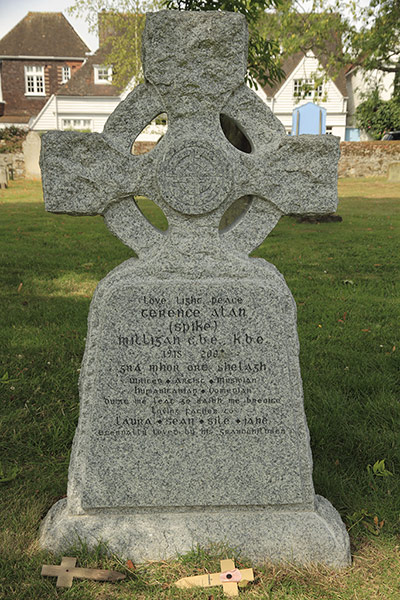
Winchelsea, East Sussex
Suggested by TheOneArmedBadger and plotterinthepark
Comedian Spike Milligan finally had the last laugh when his joke ‘I told you I was ill’ was inscribed as his epitaph two years after his death. However, to meet approval from Chichester Diocese, the phrase had to be written in Gaelic: Duirt me leat go raibh me breoite. Photograph: Matthew Fry/Alamy
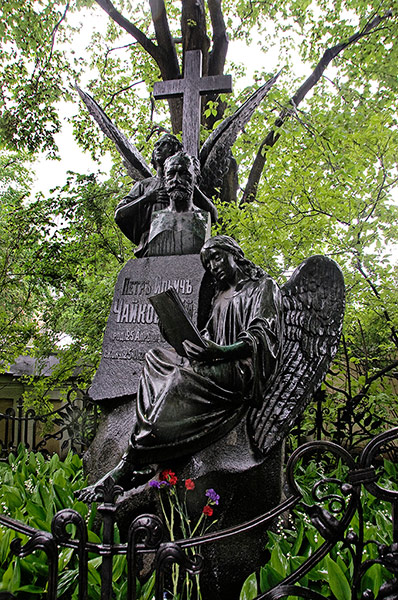
Alexander Nevsky Cemetery, St Petersburg
Suggested by muscleguy
The composer of Swan Lake, Romeo and Juliet and the Nutcracker died in 1893. The official cause of death was cholera, but many have since suggested that he may have chosen to commit suicide by drinking the contaminated water. He is buried in the Tikhvin Cemetery in the Alexander Nevsky Monastery in St Petersburg. Photograph: Alamy
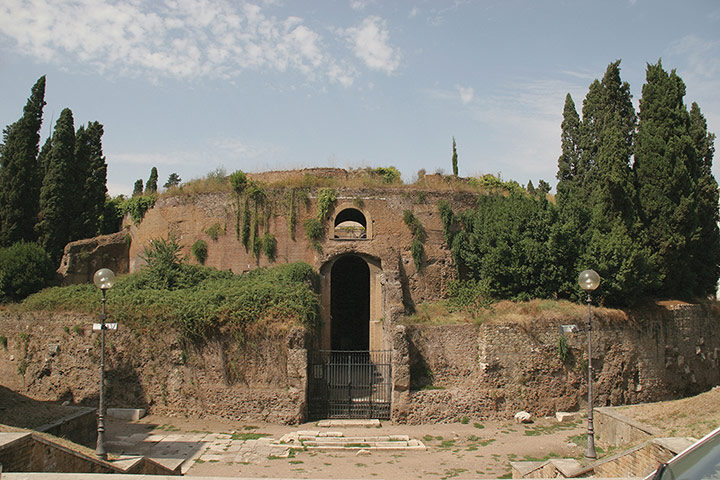
Mausoleum of Augustus, Rome
Suggested by Matthew Smith
The Mausoleum of Augustus was constructed by the first Roman emperor in 28BC, and he was buried there in AD14. The structure consisted of four layers of concentric circles of earth and brick, with Cypressa trees planted around it. Its ruins can still be seen on the Campus Martius, but it is no longer open to tourists. ‘About the one good thing Mussolini did was restore it to its former glory,’ notes Matthew Smith. Photograph: Prisma Archivo/Alamy
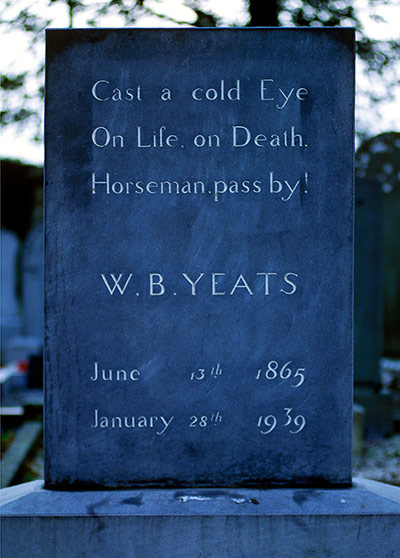
Drumcliff, County Sligo, Ireland
Suggested by filmcat and falkenberg
‘Cast a cold Eye / On Life, on Death. / Horseman, pass by’ So reads the epitaph on the gravestone of poet WB Yeats, taken from his poem Under Ben Bulben. Originally buried in Roquebrune-Cap-Martin, France, his body was moved to Drumcliff, County Sligo in September 1948, nine years after his death. Photograph: Mira/Alamy
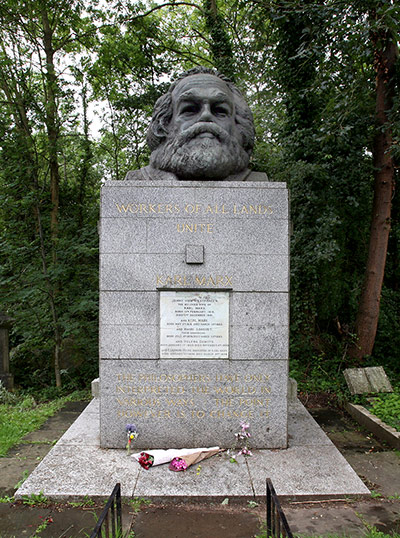
Highgate Cemetery, London
Suggested by CritoMeno, Zwoman48 and Mez747
The political thinker and author of the Communist Manifesto died in London in 1883. The huge bust of Marx and monument bearing the epitaph ‘Workers of all lands unite’ was added in 1959, when his grave was moved to the eastern side of a Highgate cemetery. Photograph: Paul Grover/Rex Features
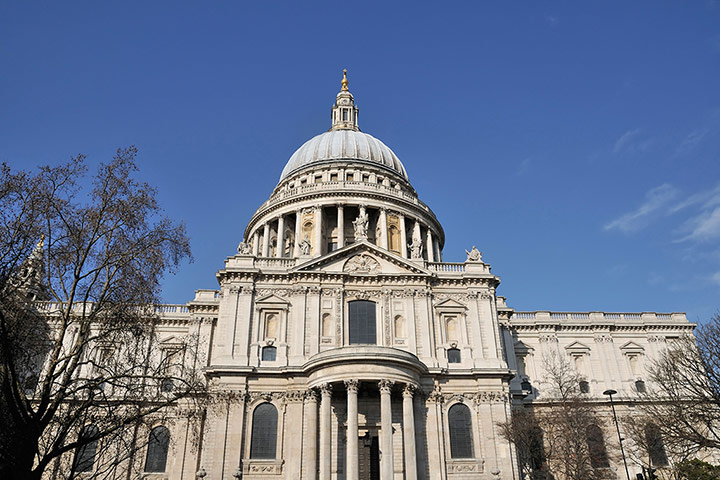
St Paul's Cathedral, London
Christopher Wren Suggested by Sussexperson and Hansilo Hansilo sums this one up: 'I don't think anything beats Christopher Wren's small tomb in the crypt of St Paul's Cathedral. Dwarfed by more imperious tombs and quite hard to find it rewards you with the following in Latin: "Reader if you seek a monument, look around you."' Photograph: Richard Barnes/Alamy

